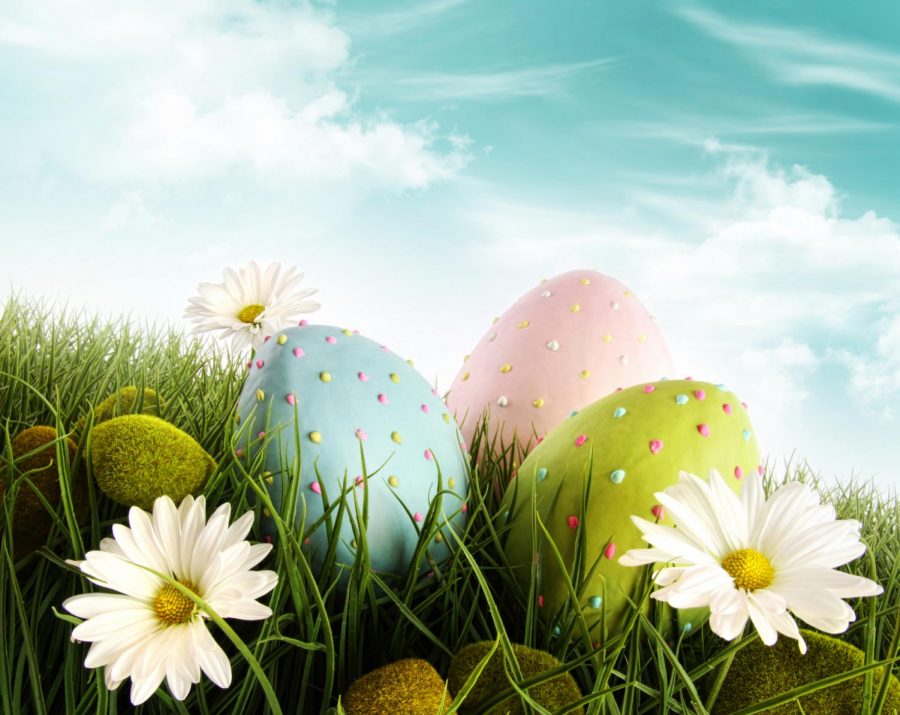Easter as we know it is a pastel, colorful wonderland of plastic eggs or decorated hard-boiled eggs and chocolate candy delivered by bunnies. It has roots in Christianity, representing the rebirth of Christ and takes place 40 days after Lent begins on Ash Wednesday. Easter is considered a movable holiday and takes place on the first Sunday after the first full moon following the spring equinox.
For Christians, Easter celebrates the resurrection of Jesus Christ and is a religious event with the 40 days preceding focusing on self-reflection and time of preparation for the resurrection. During this time, many Christians will fast either by giving up something that they love dearly, a favorite food or hobby for example, or by committing to the betterment of themselves, taking up a new exercise regimen or a more rigorous study habit. Many families will also refuse to eat meat either throughout the entirety of Lent or only refusing meat on Fridays which lends itself well to the Fish Frys which are popular gatherings for Christians during Lent as well as specials that go on in restaurants which cater to those who give up meat during Lent.
In addition, throughout Lent, Roman Catholic churches do not sing the ‘alleluia’ which is a praise and exclamation of joy. Because Lent symbolizes the 40 days that Jesus spent suffering in the desert, it is a time of reflection and sacrifice rather than one of joy and this is reflected in the songs that are sung in Mass. On Easter, the alleluia returns to Mass and everyone celebrates its return as it means that the sorrowful period of Lent has ended and the joyful season of Easter is begun.
This holiday is not only a religious holiday, however. It also has roots in pagan rituals which we see in both the placement of the date as well as the traditional forms of celebration within.
Some of the traditions that follow Easter include easter eggs that are either part of a hunt, usually for children, or given to children in an Easter basket by the Easter bunny. The eggs may have money, candy, or small toys within them. For Christians, some traditions include Palm Sunday which commemorates Jesus’ arrival in Jerusalem and palm leaves were laid on the ground to greet him when he arrived.
The date of Easter traces its roots back to the pagan celebration of the spring equinox which occurs when the amount of time that is day or night is equal. This is a celebration of the goddess of Spring, known as Ostara among other names. Hers is a spirit of renewal. The goddess was often depicted with the hare which represents the arrival of spring as well as fertility. Thus, bringing along the idea of the Easter bunny.
The egg represents fertility and renewal as well as Spring. The egg finds its place in our tradition alongside the rabbit because the Germanic mythology states that Ostara healed a wounded bird in the woods by turning it into a hare and the bird-hare showed its gratitude to the goddess by laying eggs for her as gifts.
Coloring eggs is associated far back as it had been used as a symbol of fertility when the ancient Egyptians and Persians would color and eat eggs during their Spring festival. In ancient Egypt, it was a symbol for the sun, and the Babylonians saw the egg as hatching a goddess of theirs, Venus Ishtar. Christians color and share eggs at Easter to celebrate new life because an empty shell represents the empty tomb after Jesus was resurrected.
Easter also shares its holiday with the Jewish festival of Passover which commemorates the liberation of Jewish people from slavery in Egypt when the plagues came through, the final one being a passing over of a dark angel-like figure who slaughtered the firstborn sons unless the blood of a lamb marked the doorway of the home.
These markings protected the Jewish families and the death of the firstborn sons convinced the Pharaoh to send away all the Jews out of Egypt with Moses. Passover maintained its significance as Jewish people repeatedly found themselves oppressed by foreign powers and turned to this day as hope for liberation.
It is from Passover that the tradition of eating lamb for Easter dinner comes from. In some cases, cakes are decorated with lambs or in the shape of a lamb. Lambs were often the choice of sacrifice in the Old Testament and were used to mark that the Jewish people were not to be harmed by the angel of death when it passed over Egypt. In Christian sects, lamb is the symbol for Jesus in the “lamb of God” and is used in this way to celebrate Easter.
While Easter is celebrated by people all over the world, it is also a marketable holiday with greeting card sales, chocolate sells, and the manufacturing of bunnies and colorful plastic eggs rising. A market has arisen for Easter themed toys as well as kits for dyeing eggs. As a result, it is increasingly easier to celebrate Spring.
It is good to look back on the roots of these holidays as we prepare to welcome warmer weather and the rebirth of nature once again so that we can better understand where these traditions and holidays come from, and maybe even pick up some new traditions along the way.





